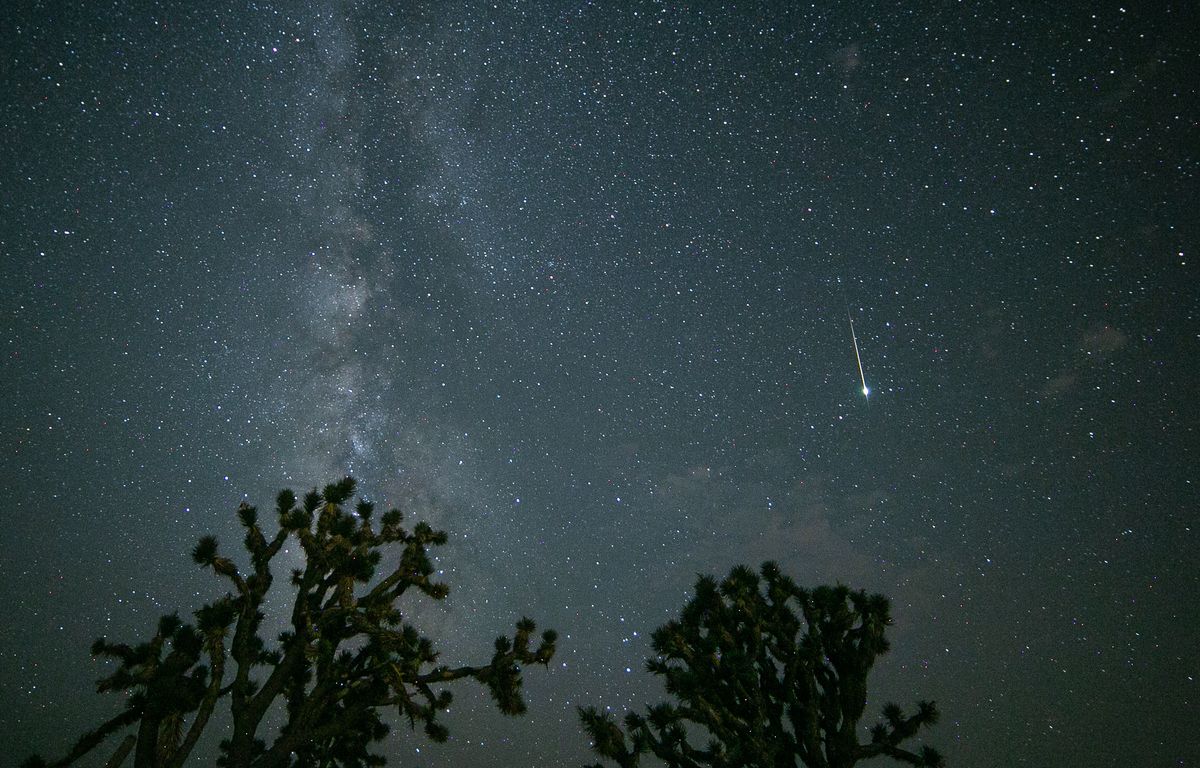
This week, special celestial speckles will cascade over Earth as part of a meteor shower that has never rained down on the planet before.
A new meteor shower began outbursting last week and astronomers expect its main peak to happen in the next few days. The event is happening over the southernmost regions of Earth’s Southern Hemisphere, so radar instruments in New Zealand, Argentina and Chile are in the best spots to detect these faint but extraordinary “shooting stars.”
Meteor showers typically occur annually, lighting up the night sky around the same time each year when Earth passes through the debris field left behind from a comet or an asteroid. The debris field from Comet 15P/Finlay, however, hasn’t intersected Earth on its trip around the sun until now. Part of this is due to the small size of the debris, and how the solar wind that radiates off the sun can perturb where this path is located in the solar system.
Related: How to see the best meteors showers of 2021
Initially, the meteor shower was dubbed by some as the “Finlay-ids” after its parent comet. New confirmed sightings show that the meteors are emanating from the southern constellation Ara, leading to a new name: the “Arids.” It was recently added to the International Astronomical Union’s Working List of Meteor Showers, according to an Oct. 1 report from the Central Bureau for Astronomical Telegrams at Harvard University.
Just as astrophysicist Diego Janches and his colleagues predicted earlier this year, the meteor shower made its appearance at the end of September and will peak around Thursday (Oct. 7). The ongoing outburst was detected by the Cameras for Allsky Meteor Surveillance (CAMS) networks in New Zealand and Chile on Sept. 28 and Sept. 29. The Southern Argentina Agile Meteor Radar Orbital System (SAAMER-OS) in Tierra del Fuego, Argentina detected the shower on Sept. 29 and reported that it lasted about three hours.
“Further meteor-shower activity from this comet is expected in the coming weeks,” the report added. “A second outburst from crossing the debris ejected in 2008 is predicted to be centered on 2021 Oct. 7 [at] 00h35m UT [8:35 p.m. EDT], followed by a third outburst from debris ejected in 2014 centered on 2021 Oct. 7 [at] 03h55m UT [11:55 p.m. EDT].”
The shower was entered into the IAU Working List of Meteor Showers under number 1130 and code “ARD”. The Arid shower has never been seen before, but the event was predicted by astronomers tracing the evolution of meteoroids ejected by Comet 15P/Finlay…October 1, 2021
The Search for Extraterrestrial Intelligence (SETI) Institute tweeted about the event last Thursday (Sept. 30).
“The Arid shower has never been seen before, but the event was predicted by astronomers tracing the evolution of meteoroids ejected by Comet 15P/Finlay … during its return to the inner solar system in 1995,” SETI Institute shared in the Twitter thread. “The stream of particles ejected that year evolved to move in and out of Earth’s orbit until Earth was predicted to travel through that stream 26 years later.”
Related stories
When these sand-sized comet shavings strike the planet’s upper atmosphere, they will reportedly travel at a slow speed of 6.7 miles per second (10.8 km/s) so it will be a difficult shower to observe. But if the telegraph report is any indication, astronomers have been able to successfully collect impressions of the rare event from across the globe.
Although this new meteor shower is only visible from the Southern Hemisphere, skywatchers in the Northern Hemisphere may also have a chance to spot “shooting stars” from a different meteor shower this week. The annual Draconid meteor shower is peaking around the same time as the Arids, with greatest activity expected on the morning of Oct. 8. Conveniently, the new moon on Oct. 6 will provide dark skies to help maximize your chances of spotting a meteor in the night sky.
Follow Doris Elin Urrutia on Twitter @salazar_elin. Follow us on Twitter @Spacedotcom and on Facebook.
from WordPress https://ift.tt/3a9I8NG
via IFTTT

No comments:
Post a Comment